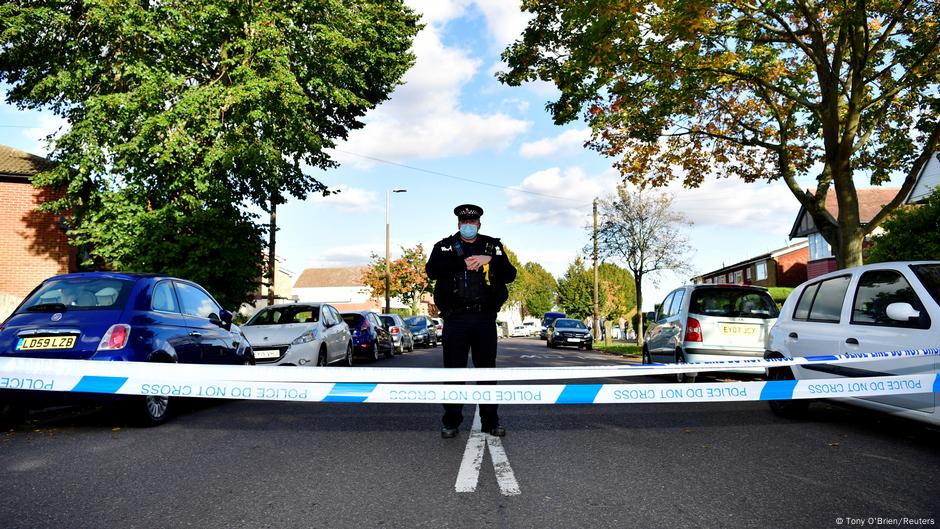Warning: This article contains references to sexual assault, and other details that readers may find disturbing.
A viral bar chart circulating on X (see screenshot below) paints a disturbing picture. At the very top, a red bar labeled “United Kingdom” extends far beyond every other, accompanied by the all-caps headline: “rapes in Europe.”
According to the graphic, the number of rapes in the UK per 100,000 people in 2022 appeared to be exponentially higher than in Spain, Greece, Germany and the rest of Europe. But the chart is a textbook case of using accurate numbers to mislead and distort facts.
DW took a closer look.
Claim: “The UK is now the rape capital of Europe,” one user postedon X. The claim was viewed over a million times.
DW Fact check: Misleading.
The data showing that the UK reported 109 rapes per 100,000 people comes from the World Population Review. The figures are drawn from the United Nations Office on Drugs and Crime (UNODC). They also warn, “the challenges of cross-national comparability are considerable.” The site itself cautions readers, noting the “apples-to-oranges nature of international rape statistics” due to major differences in legal definitions, reporting practices, and cultural factors.
“It’s taken from a source and used in a way that the source literally says, ‘don’t do this because it’s not accurate,’” explained Tanya Serisier, a lecturer in criminology at the Birkbeck University of London and author of “Speaking Out: Feminism, Rape and Narrative Politics,” in an interview with DW.
Why are the numbers misleading?
The figures are accurately cited from World Population Review as of this summer. They have since been updated to 117 rapes per 100,000 people — up from 25 per 100,000 in 2003. The rate hovered around 100 between 2018 and 2020 before climbing to its latest level. But comparing these figures across countries is problematic. In 2022, Grenada topped the list, then the United Kingdom, then Sweden, Panama and Iceland.
Lebanon, Indonesia, the United Arab Emirates and Hong Kong are at the bottom of the list.
Eurostat, the EU’s statistical office, which collects similar data across all of Europe, told DW that “focusing solely on the number of crime offenses can be misleading and insufficient.” The UK’s seemingly high rate is more reflective of its reporting practices and legal definitions than of actual prevalence.
Why cross-country comparisons fail
There are a number of reasons why crime statistics are so hard to compare across borders.
It starts with how countries define rape. Some have very narrow legal definitions, requiring proof of physical attack, threat, or coercion. Other countries employ broader definition. The UK overhauled its sexual offenses law in 2003 to be consent-based.
There are also differences in how each country counts and reports on crime. For example, a group rape can be counted as a single offense, or, as in the UK, as multiple offenses by each perpetrator.
The UK uses what are called input statistics, where a case is counted in conjunction with a police report being filed. Some countries wait until after a report is filed, and some wait until an investigation is closed.
Finally, there are cultural differences, such as trust in the criminal justice system, the persistence of rape myths, attitudes around consent, and as Eurostat says, the society’s “level of knowledge and acceptance of sexual violence.”
All of these factors affect whether a victim will decide to report the crime to police, who provide the stats in the graphic.
A better way to measure
Criminologists recommend a different approach: victim surveys, where representative samples of people are asked about their experience over a time period, instead of relying on police report statistics.
“Crime statistics are only showing us — and people often use the metaphor of an iceberg — the things above the sea level. Those are things that get reported, that get counted by official agencies,” Serisier said. “But for nearly all crimes, there’s another layer of things that don’t ever come to the attention of authorities.”
According to statistics from the UK’s Office for National Statistics, police recorded more than 71,000 rapes in England and Wales in 2024 in total, which is a 479% increase since 2002. The Crime Survey for England and Wales, however, tells a different story. It estimates that about 1.9 million adults experienced rape or attempted rape in 2022, the latest year available. Yet the share of adults reporting having been raped has remained relatively stable since 2005, fluctuating between 0.4% and 0.7% each year.
A Europe-wide survey with standardized questions would be “the only way to know which is the real rate of rape,” said University of Lausanne comparative criminologist Marcelo Aebi.
The Swedish National Council for Crime Prevention came to a similar conclusion in a 2020 report, writing: “A well-executed European victims of crime survey is a better source of knowledge.”
The role of migration
Claim: “The driving factor? Uncontrolled mass immigration,” posted by British MP Rupert Lowe, leader of the anti-migration group Restore Britain, which created the graphic. His post has been viewed one million times.
DW Fact check: False.
The UK and the Netherlands have nearly identical shares of foreign-born residents — around 16% as of 2022 — yet the chart shows the Dutch rate of rapes per 100,000 is less than one-sixth that of the UK’s.
“The claim that’s often made essentially is, ‘We are letting in more immigrants and particularly more immigrants from certain areas and that’s increasing our rates of sexual assault,’” Serisier explained. “There is no evidence to suggest that that’s the case at all.”
The UK does not publish data on the nationality or ethnicity of perpetrators. What national data does show is that 85% of victims knew their offender, according to a national survey conducted by the government between 2014 and 2017.
Other factors likely contributed to the rise in reported rapes. After a Metropolitan Police whistleblower revealed in 2014 that sexual offenses were being under-recorded by roughly a quarter, the police reformed how it records crime reports. Cultural changes, such as the and high-profile cases, have likely spurred victims to come forward as well.
Lowe, a former member of Nigel Farage’s populist party, launched Restore Britain in summer 2025. He has pushed for an anti-immigration platform, saying “the asylum system must be abolished” while calling for “mass deportations” and “the removal of millions of people.”
“I want to see the data, because facts come first,” said Marcelo Aebi. “In these issues, there is a lot of advocacy, people that from the beginning know what they want to say and how to explain it. Rhetoric is very easy.”
While the UK’s rape statistics appear alarmingly high, the reality is far more complex. Differences in legal definitions, reporting practices, and cultural factors make international comparisons misleading — and claims linking immigration to sexual violence are not supported by evidence.
If you are suffering from emotional strain, seek professional help. You can find information on where to find help, no matter where you live in the world, at this website: www.befrienders.org.
Edited by: Astrid Prange de Oliviera, Rayna Breuer and Rachel Baig
The post Fact check: Comparing European rape statistics doesn’t work appeared first on Deutsche Welle.




